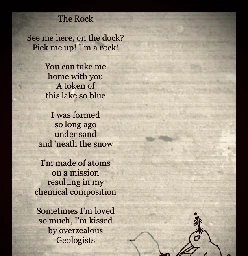
Fossils
- A 149 million-year-old pterosaur is Britain’s largest flying animal – how scientists proved it from a single finger bonetheconversation.com A 149 million-year-old pterosaur is Britain’s largest flying animal – how scientists proved it from a single finger bone
The Jurassic pterosaur’s size was estimated from only its finger bone.
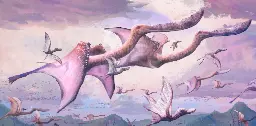
cross-posted from: https://lemmy.world/post/19730685
> Scientists have estimated the size of an extinct flying reptile called a pterosaur, based on fragments of a fossil finger bone discovered in southern England in June 2022. These results reveal it to be the largest British pterosaur yet described, and the second-largest Jurassic pterosaur worldwide. > > This 149 million-year-old fossil, known as EC K2576 and nicknamed “Abfab” by the researchers, was found in Abingdon, Oxfordshire – and it is fabulous. They have since attempted to work out what type of pterosaur it was – its taxonomy – and how big the animal was. > > During the Mesozoic Era, the “age of reptiles” which lasted from 252 to 66 million years ago and which includes the Jurassic period, dinosaurs, pterosaurs and other giant reptiles roamed Earth – with many dwarfing the largest terrestrial animals alive today.
- Fossils of 385 million-year-old fish found in Inverness pavementwww.bbc.com Fossils of 385 million-year-old fish found in Inverness pavement
A National Trust for Scotland worker spotted the dark lumps in a paving stone in Inverness city centre.

>Thousands of people have walked over the remains of 385 million-year-old fish in the slab of Caithness flagstone outside Inverness Town House. > >James Ryan, who works at a National Trust for Scotland museum dedicated to Highland geologist Hugh Miller, spotted the fossils while on a wander. > >He said: "Whilst fossil fish are known in pavements in cities like Glasgow and Edinburgh, to my knowledge these fossils seem to have gone amiss." > > ... > > Mr Ryan said: "These fossils in the paving slab are the remains of ancient fish dating to around 385 million years ago - around 140 million years before the first dinosaur. > >“Caithness flagstone was laid down as sediment over a period of thousands of years at the bottom of a giant freshwater lake which stretched from the Moray coast up north to Orkney and Shetland." > >The fish date from the Devonian period, which are thought to include evidence of a fin. > >Mr Ryan said: "I brought them to the attention of a palaeontologist who studies these fossils and they were not aware of them. > >"The staff at Inverness museum likewise were not aware of these fossils either."
- Schoolgirl's dinosaur footprint find on Vale of Glamorgan beachwww.bbc.com Schoolgirl's dinosaur footprint find on Vale of Glamorgan beach
Experts think 10-year-old Tegan uncovered prints of a huge herbivore from the late triassic period.

> When 10-year-old Tegan went for a summer holiday beach stroll with her mum, she had no idea they would be actually walking in the footsteps of dinosaurs. > >The schoolgirl spotted five enormous footprints that dinosaur experts believe are the mark of a camelotia that was there more than 200 million years ago. > >Palaeontologists think the footprints, which are up to 75cm (30in) apart, were made by a huge herbivore from the late triassic period, and now there are efforts to get them verified. > >Tegan and mum Claire have been told by the National Museum Wales palaeontology curator that she is "fairly certain they are genuine dinosaur prints".
- Most complete dinosaur fossil in a century discovered on the Isle of Wightnews.sky.com Most complete dinosaur fossil in a century discovered on the Isle of Wight
The dinosaur is thought to be a herding animal that weighed the same as an African elephant. It was part of a group of dinosaurs often described as the "cows of the Cretaceous period".
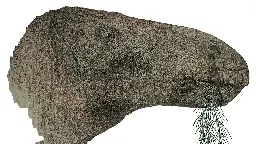
> The fossil of a herbivorous dinosaur, as big as an American male bison, has been discovered on the Isle of Wight. > >It is the most complete dinosaur skeleton discovered in the UK in a century, with 149 bones in total. > >The hefty dinosaur, now called Comptonatus chasei, roamed southern England around 125 million years ago and would have weighed as much as an African elephant. > > ... > > The dinosaur belongs to a group of herbivorous dinosaurs known as iguanodontians, large, bulky creatures often described as the "cows of the Cretaceous period" by palaeontologists. > >It was discovered by fossil hunter Nick Chase who sadly died of cancer just before the COVID-19 pandemic. The species is named after him. > > ... > > Paying tribute to Mr Chase, Mr Lockwood said: "Nick had a phenomenal nose for finding dinosaur bones." > >"He collected fossils daily in all weathers and donated them to museums," he added. > >"I was hoping we'd spend our dotage collecting together as we were of similar ages, but sadly that wasn't to be the case. > >"Despite his many wonderful discoveries over the years, including the most complete Iguanodon skull ever found in Britain, this is the first dinosaur to be named after him." > >Nick Chase also discovered the remains of Europe's largest-ever land-based predator dinosaur on the island, which were revealed last year.
- The fossil finder: one man’s lifelong search for fragments of Britain’s Jurassic past – photo essaywww.theguardian.com The fossil finder: one man’s lifelong search for fragments of Britain’s Jurassic past – photo essay
Richard Forrest has spent half a century combing beaches for ammonites and other fossils. Along the Dorset coast, the constant shift of earth, rocks and sand continually reveals fresh evidence of life millions of years ago

> When Richard Forrest walks along the Lyme Regis beach on the Jurassic coast in Dorset, he carries in his small backpack a pointed pick, a geological hammer and an old kitchen knife. But he very rarely uses them until he is back home with a rock or two to work on. “The most important thing to take with you is your eyes,” he says. “And learn what it is you’re looking for.” > > Forrest is a fossil finder and has spent more than 50 years on Britain’s beaches hunting for evidence of the country’s prehistoric past. The Jurassic coast, stretching 95 miles (150km) across Devon and Dorset, is world famous for its treasure trove of ammonites and other fossils that lie, in many places, conspicuous beneath visitors’ feet. Others are hidden within the cliffs, only exposed after heavy rains bring on one of the regular landslips. “The best feeling is when you find something you think is potentially interesting and then you get it home and discover that wow, this is really interesting,” he says. “That feeling is amazing.”
- Prehistoric 'Dune' worm found in Herefordshire quarry was a predatorwww.bbc.com Prehistoric 'Dune' worm found in Herefordshire quarry was a predator
Researchers say the ancient creature is reminiscent of giant worms in the Hollywood film Dune.
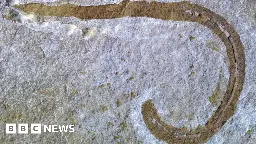
> An ancient worm discovered in Herefordshire was a carnivorous predator that stuck its throat out to catch and eat prey, according to scientists. > > The creature, named Radnorscolex latus, was found at a disused Victorian quarry site in Leintwardine. > > The marine worm is thought to have lived on the sea floor about 425 million years ago, when the region was under water. > > Analysis suggests it had a retractable throat that could extend out onto the seabed to capture prey hidden within the sediment. > > Radnorscolex is reminiscent of giant worms in the Hollywood film Dune, according to Dr Richie Howard, curator of fossil arthropods at the National History Museum. > > Dr Howard said: "We think they weren't too picky when it came to feeding and likely just shoved their throat out into the mud and grabbed anything they could find. > > "They certainly make you think of the sandworms in Dune in that respect." > > Fossil remains of Radnorscolex were first discovered a century ago, but the technology was not advanced enough to allow palaeontologists to examine these in great detail.
- Large fossil discovery finally exposes origins of Welsh dragonsphys.org Large fossil discovery finally exposes origins of Welsh dragons
A large fossil discovery has helped shed light on the history of dinosaurs in Wales. The find is reported in Proceedings of the Geologists' Association.

> A large fossil discovery has helped shed light on the history of dinosaurs in Wales. The find is reported in Proceedings of the Geologists' Association. > > Until recently, the land of the dragon didn't have any dinosaurs. However, in the last 10 years, several dinosaurs have been reported, but their life conditions were not well known. > > In a new study by a team from the University of Bristol, important details have been revealed for the first time. The researchers found that early Welsh dinosaurs, from more than 200 million years ago, lived on a tropical lowland beside the sea. Dinosaur trackways are known from Barry and other sites nearby, showing that dinosaurs had walked across the warm lowlands. > > The discovery was made at Lavernock Point, close to Cardiff and Penarth, where the cliffs of dark-colored shales and limestones document ancient shallow seas. At several levels, there are accumulations of bones, including the remains of fish, sharks, marine reptiles and occasionally, dinosaurs.
- ‘Virtually complete’ Stegosaurus fossil to be auctioned at Sotheby’s geek weekwww.theguardian.com ‘Virtually complete’ Stegosaurus fossil to be auctioned at Sotheby’s geek week
The 11ft and tall and 20ft long fossil, nicknamed Apex, could fetch up to $6m as it’s celebrated as ‘one of the best unearthed’

> The largest and most complete Stegosaurus fossil ever found is expected to fetch up to $6m (£4.7m) when it is sold as the star lot in Sotheby’s “geek week” auction this summer. > > At 11ft (3.4 metres) tall and more than 20ft long the “virtually complete” fossil, which has been nicknamed “Apex”, is more than 30% larger than “Sophie”, the previously most intact stegosaurus specimen which was on display in London’s Natural History Museum. > > Cassandra Hatton, the qglobal head of science at Sotheby’s, said: “Apex marks an incredibly important milestone, as simply one of the best fossils of its kind ever unearthed.
- Boy and grandad find dinosaur footprint in Irchesterwww.bbc.com Boy and grandad find dinosaur footprint in Irchester
Experts say the footprint probably belongs to a megalosaurus.
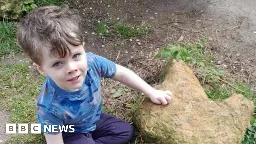
> Keen fossil hunter Steve was exploring Irchester Country Park, Northants, with three-year-old Cody when they found an unusually shaped rock partially buried. > > Experts from London's Natural History Museum confirmed the find as being a dinosaur footprint cast. > > It is thought it belonged to a megalosaurus that stood six metres (20 feet) in length.
- Ancient Shrimp with Glasgow origins named weegie in honour of citywww.glasgowlive.co.uk Ancient Shrimp with Glasgow origins named weegie in honour of city
The shrimp has been given the name Tealliocaris weegie after a scientific paper identified it as a Glaswegian crustacean believed to have swam in the Carboniferous seas surrounding the city.
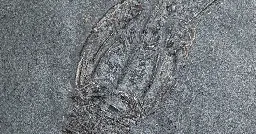
> A type of shrimp that died out hundreds of millions of years ago has been declared a new species and a Glaswegian. > > The shrimp is believed to have swam in the Carboniferous seas surrounding Glasgow around 333 million years ago. Its fossil was found at the same world-famous locality where the Bearsden Shark was excavated in the early 1980s. > > The shrimp has been given the name Tealliocaris weegie after a scientific paper identified it as a Glaswegian crustacean. Its authors thought that it would be appropriate to name the new species in honour of the people of Glasgow and the local dialect. > > The paper was recently published in the Royal Society of Edinburgh’s journal Earth and Environmental Science Transactions.
- Is it a bird or a dinosaur? Fossils from Teylers Museum in Netherlands secretly visit UK's synchrotronphys.org Is it a bird or a dinosaur? Fossils from Teylers Museum in Netherlands secretly visit UK's synchrotron
The feathered limbs, sharp teeth and claws of the oldest known bird-like dinosaurs, the Archaeopteryx have fascinated naturalists and paleontologists including Charles Lyell and Charles Darwin who propelled the species to fame especially following publication of his theory of evolution.
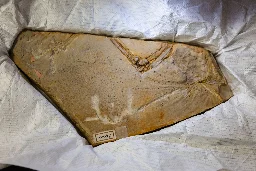
> The feathered limbs, sharp teeth and claws of the oldest known bird-like dinosaurs, the Archaeopteryx have fascinated naturalists and paleontologists including Charles Lyell and Charles Darwin who propelled the species to fame especially following publication of his theory of evolution. > > So, when a precious 150-million-year-old Ostromia crassipes fossil—formerly known as a specimen of Archaeopteryx—arrived at Diamond Light Source in a high security operation, it naturally caused a great deal of excitement. > >The rare fossil, which is usually housed at the renowned Teylers Museum in the Netherlands, was brought to Diamond so scientists could discover more about its features, including the color of its feathers. The specimen was studied on the I18 beamline, using a microfocus X-ray available at the U.K.'s leading science facility. > > ... > > Collection manager, Tim de Zeeuw, described it as the Mona Lisa of the museum's fossil collection. He explained that the Jurassic fossil was discovered at Jachenhausen, a village in southeastern Germany in 1855. The fossil was secretly brought to the U.K. by a special transport team and was kept under lock and key around the clock, even while on the beamline at Diamond. > > ... > > Lead author, Edgar Mulder, a master's student at the university explained that it was a bit of dream come true to get time to examine the fossil at Diamond and the team worked through the night to get as much information as possible. > > ... > > Analysis was conducted using a combination of X-ray fluorescence imaging and absorption spectroscopy at Diamond's microfocus spectroscopy beamline I18. Principal Beamline Scientist on I18, Konstantin Ignatyev added, "This beamline has a super bright energy-tuneable X-ray microbeam that can be focused down to 2 micron, that can scan the widest range of elements on the periodic table. > > "This allows the study elemental and chemical composition of various samples at very high spatial resolution. In this case, it allowed us to look in detail at the chemical environment of sulfur at different locations on the fossil as well as pinpoint the distribution and concentration of other elements from phosphor to zinc. > > "Looking at the sulfur chemistry in this sample, for example, might reveal chemical signals of degradation products of soft tissues like tissues, feathers, skin, keratin, etc. This will reveal more detail about this fossil than what has been possible to see before."
- Wolfgang Grulke: Fossils collected over 50 years to be soldwww.bbc.com Wolfgang Grulke: Fossils collected over 50 years to be sold
Wolfgang Grulke hopes to find a new home for the multimillion-pound collection before he turns 80.
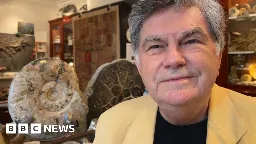
> A collector who has amassed thousands of rare fossils that he displays in a private museum is in talks to sell his "cabinet of curiosities". > > Wolfgang Grulke has been buying and conserving prehistoric artefacts, which he keeps in a converted barn near Sherborne, Dorset, for 50 years. > > Now he wants to find them a new home, before he turns 80 in two years' time. > > Mr Grulke says he wants the collection to go to a place where "people will be astonished and fuel their curiosity". > > It was half a century ago that Mr Grulke, who at the time knew nothing about fossils, was "enticed" to visit Lyme Regis by a fossil-hunting friend. > > He said: "That evening, over a beer, we discussed our finds with some of the locals and they introduced me to the idea of Mary Anning - a young person in her teens and twenties - collecting fossils and becoming world famous." > > The conversation would spark a lifelong passion and Mr Grulke spent the next five decades building his multimillion-pound collection, which has received some notable visitors, including Sir David Attenborough. > > Artefacts include the world's largest uncoiled ammonite, an entire ichthyosaur skeleton, and huge clusters of marine fossils that were discovered high in the Alps.
- The best places to go fossil hunting in Britain
> Britain is home to some of the best beaches for fossil hunting. The 96-mile-long Jurassic coast of Dorset and Devon, the Isle of Wight (also known as “Dinosaur Island”) and the Yorkshire coast are hotspots. Quarries – when accessed safely – are like fossil amphitheatres; their layers of rock stripped back to reveal prehistoric treasure. > > Here, we’ve dug up five of the best fossil hunting locations in Britain.
They are:
- Compton Bay, Isle of Wight
- Crail, Fife
- Boggle Hole, Yorkshire
- Lyme Regis, Dorset
- Upper Gilwern Quarry, mid-Wales
My tips:
- Guided walks are the best place to start
- Be aware of the tide times when on thr coast
- Don't go into quarried without taking advice from the owners or local experts
- Fossils found in Somerset by girl, 11, ‘may be of largest-ever marine reptile’www.theguardian.com Fossils found in Somerset by girl, 11, ‘may be of largest-ever marine reptile’
Experts believe remains belong to a type of ichthyosaur that roamed the seas about 202m years ago
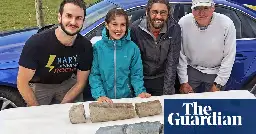
> The fossils are thought to be from a type of ichthyosaur, a prehistoric marine reptile that lived in the time of dinosaurs. The newly discovered species is believed to have roamed the seas towards the end of the Triassic, about 202m years ago. > > The team have named the species Ichthyotitan severnensis, meaning “giant fish lizard of the Severn”. > > “This giant probably represents the largest marine reptile formally described,” said Dr Dean Lomax, a palaeontologist at the University of Bristol and co-author of the research, adding that comparisons with fossils from other ichthyosaurs suggested the creature would have been about 25 metres in length – about the size of a blue whale. > > “Of course, we have to be careful with such estimates because we are dealing with fragments of giant bones,” he added. “But nonetheless, simple scaling is commonly used to estimate size, especially when comparative material is scarce.” > > The team say samples from the fossils suggest the creature was still growing. And there is another twist. > > “We believe these ichthyosaurs are the last surviving members of the family called shastasaurida, which went extinct during the global mass extinction event at the end of the Triassic,” said Lomax. > > Writing in the journal Plos One, Lomax and colleagues report how the first pieces of the jawbone were discovered by Justin Reynolds and his daughter Ruby – co-authors of the paper – on the beach at Blue Anchor in May 2020, when Ruby was 11.
- Pliosaur sea monster enters world record bookswww.bbc.com Pliosaur sea monster enters world record books
Guinness World Records confirms the 2m-long skull is the "most complete" in the world.
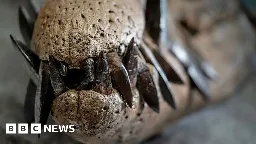
> The skull of a prehistoric sea monster found on the Jurassic Coast has made it into the world record books. > > The 2m-long (6ft) skull of a pliosaur, excavated from high above a beach in Dorset, was the subject of a BBC film presented by Sir David Attenborough. > > Guinness World Records confirmed it was the "most complete" of its type on the planet. > > It said it was about "95% complete by surface area", with "previously unobservable details" of the genus. > > The snout of the pliosaur was discovered in 2022 by fossil enthusiast Philip Jacobs, prompting an excavation involving teams suspended by ropes high above the beach. > > Sir David investigated the discovery in a BBC film broadcast on New Year's Day. > > It is now on display at the Etches Collection museum in Kimmeridge. > > Founder Dr Steve Etches is crowdfunding to recover the rest of the 150-million-year-old creature that remains embedded in the fast-eroding cliff face.
- 390 million-year-old fossilized forest is the oldest ever discoveredwww.livescience.com 390 million-year-old fossilized forest is the oldest ever discovered
Researchers have discovered a fossil forest with small, palm-like trees and arthropod tracks dating back to the Middle Devonian.
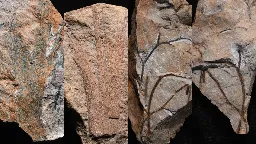
> Fossilized trees discovered by chance in southwest England belong to Earth's earliest-known forest, new research has found. The 390 million-year-old fossils supplant the Gilboa fossil forest in New York state, which dates back 386 million years, as the world's oldest known forest. > > The new discovery highlights differences between the two ecosystems, suggesting forests went from being relatively primitive to well established over the course of just a few million years, said Neil Davies, the lead author of a new study published Feb. 23 in the Journal of the Geological Society. > > "Why it's important — broadly — is it ticks the boxes of being the oldest fossil forest," Davies, a professor in the Department of Earth Sciences at the University of Cambridge in the U.K., told Live Science. The finding is also remarkable because it reveals stark differences between the complex array of ancient plants found at Gilboa and the newly discovered forest, which appears to have hosted just one type of plant, Davies said. > > ... > > Davies and his colleagues stumbled upon the forest remnants during fieldwork in the Hangman Sandstone Formation, which dates to the Middle Devonian period (393 million to 383 million years ago). During the Devonian period, what is now the U.K. formed part of a continent called Laurentia that sat just below the equator, meaning the climate was warm and dry, Davies said. > > Older trees exist elsewhere in the world, with plants first colonizing land 500 million years ago, but this new discovery is the earliest example of a forest with trees growing close together and en masse. > > "We've found rocks where you've got standing trees in growth positions adjacent to each other over a set area," Davies said, "so we're looking at a snapshot where we can tell for definite that there were trees growing in that specific location and that the sediment we're looking at is the forest floor." > > Among the fossil trees, the researchers found trackways belonging to small Devonian critters. "At this time, there's nothing much bigger than lots of little arthropods knocking around on land," Davies said. "You might find some more amphibian-type things and fish in some of the lakes and rivers nearby."
- Pterosaur: Unique flying reptile soared above Isle of Skyewww.bbc.com Pterosaur: Unique flying reptile soared above Isle of Skye
The pterosaur soared over the heads of dinosaurs in Scotland 168-166 million years ago.

> A unique species of flying reptile, or pterosaur, that lived 168-166 million years ago has been discovered on the Isle of Skye. > > Its wings, shoulders, legs and backbone were found in a rock on a beach, but the fossil's skull was missing. > > Scientists were surprised to find a pterosaur from this period off Scotland's west coast - they were thought to mostly live in China. > > The creature - called Ceoptera - is the second pterosaur found on Skye. > > Its name comes from the Scottish Gaelic word cheò, meaning mist, and is a reference to the Gaelic name of Isle of Syke - Eilean a' Cheò or Isle of Mist. > > Fossils from this era, called the Middle Jurassic, are extremely rare, says Dr Liz Martin-Silverstone at the University of Bristol who used a CT scanner to make a 3D digital model of the fossil. > > "Finding anything from that time period that's more than just a single bone is really exciting," she says.
- David Attenborough's Lost Worlds, Vanished Lives: 1. Magic in the Rocks (1989)www.bbc.co.uk Lost Worlds, Vanished Lives - 1. Magic in the Rocks
David Attenborough travels in search of fossils.
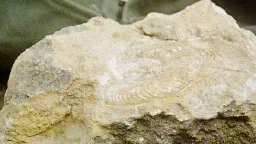
> In the first of this four-part BBC series, David Attenborough shows us how ancient creatures have come to be preserved as fossils and how those fossils can shed light on characteristics of these creatures' lives, and even their death. He further demonstrates how scientists use a variety of ingenious methods to extract once living creatures and plants from their rocky tombs.
In it he goes to the Jurassic Coast and talks about his early experiences fossil hunting in Leicestershire.
- Fossils of Jurassic sea creature found in city quarrywww.bbc.com Fossils of Jurassic sea creature found in city quarry
Vertebrae from a 155 million-year-old Opthalmosaurus have been found in a site near Peterborough.
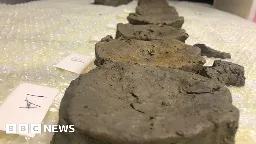
> A team of palaeontologists has uncovered parts of a Jurassic sea creature in a quarry near Peterborough. > > Fossil hunter Jamie Jordan unearthed 20 sections of vertebrae belonging to a ichthyosaur called Ophthalmosaurus - thought to be about 155 million years old. > > Mr Jordan, who runs the Fossils Galore museum in March, Cambridgeshire, said the bones were found in "pretty good" condition during last week's dig. > > A fundraising effort has begun to raise £5,000 for ground penetration radar to find the rest of the animal's skeleton.
- Pliosaur discovery: Huge sea monster emerges from Dorset cliffswww.bbc.co.uk Pliosaur discovery: Huge sea monster emerges from Dorset cliffs
Scientists marvel at the fossilised head of an underwater 'killing machine' from the Jurassic.

